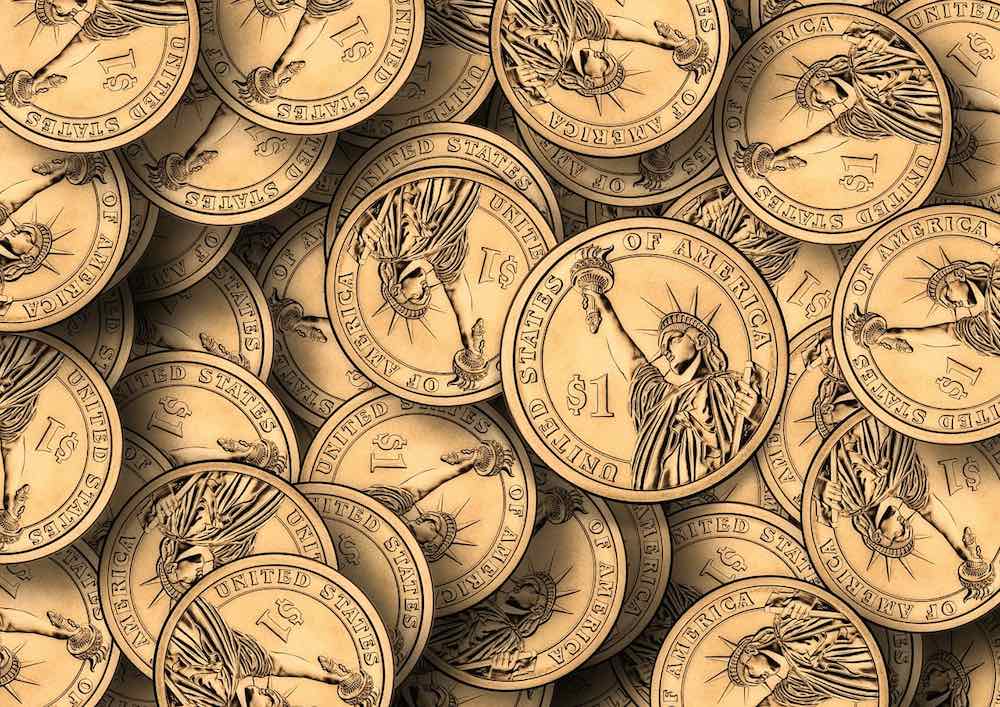In the world of economics and finance there are many complex topics that are poorly understood in the wider community. Differential calculus, options trading and multiple regression to take three examples. However, money and the monetary system is another topic I would quickly add to this list. The difference when it comes to money, however, is the number of people who believe they do understand the system. This leads to a range of misunderstandings including:
- Money in modern economies is still exchangeable for gold
- Printing of money will always lead to high levels of inflation
- Balancing a household budget is a suitable analogy for balancing the budget of a Government
- Paper money is worthless and doomed to fail
There is a lot of myths to dispel in that list. In this article we are going to tackle the question of why money works, even when not tied to a physical commodity (known as “fiat money”[1]). To do this, let’s start by imagining a world where there is no money. Instead of paying for things for money, everyone now has to barter for goods. What issues would people have in this system?
1. Coincidence of Wants
In a world where everyone has to barter to exchange goods, the first problem you are likely to encounter is described as the coincidence of wants. Imagine you are a pig farmer and, sick of eating pork for every meal (hard to imagine I know), you decide you would like to trade a pig for some wheat. The first hurdle is finding a wheat farmer who actually wants a pig. This is the coincidence – that you have pigs and want wheat, and that someone else has wheat and wants pigs and that both these wants occur at the same time.
Even in a simple agrarian village with only a limited number of food related products, you can already see the difficulties that will arise. Wheat is only available at certain times of the year and that will not coincide with the production of many other products. Some people may simply not like certain products, making it difficult for people producing those products to do any trading with them.
Introducing money into this scenario cleanly solves this problem by providing something to trade for what everybody wants at any given time.
2. Divisibility of Money
The second major problem in a barter system is the indivisibility of goods. Let’s go back to the pig farmer example and imagine again you want to trade pig for wheat. Assuming we find someone who wants to trade with us, how much of each do we actually trade? A pig is probably worth quite a large quantity of wheat, so what do I do if I only want a little bit of wheat? I’d have to kill my pig, give some of it to the wheat farmer, then hope I could find someone to buy the other parts of my pig. What about people producing even larger goods that can’t be sold in parts at all, such as a horse trainer or a house builder? They would constantly be forced to trade their goods for huge quantities of other goods.
Money solves this problem because it has the property of divisibility. I can sell a pig for $100, then split that money up to buy as many different types of goods as I want.
3. A Store of Value
The third problem in our moneyless world is that many of the goods we trade have limited lifespans. As a wheat farmer, if I have a good year and have extra wheat, what can I do with my extra wheat? I need to trade it for something or it will go off and be wasted.
In the past, this was such a problem, nearly every culture developed ways to preserve seasonal produce. Think about how many cultures have cured meats (prosciutto, jerky, spec), preserved fish (bacalao, pickled herring), pickled vegetables (cucumbers, onions, beans, peppers, achar) and fruit preserves and jams. Many of the most popular foods today were developed largely as a way to store produce over extended time periods in the days before freezers and refrigeration.
Although money doesn’t stop food spoiling, it does allow a farmer to sell off their seasonal produce for something that does not need to be preserved. That money can then be spent as needed in the future to purchase other goods. In the simple world of our example, that may simply mean buying preserved goods during the winter to survive until the next season. In a more complicated world it helps us do many things including to save for more expensive purchases such as a TV, a car, a house or our retirement.
4. Practicality
Continuing to build on the farming example, let’s imagine that the people of this particular farming village are trying to decide on a given (non-money) product that will become the unit of trade for everyone. Keeping in mind the points above, what would be the best options?
It would need to be something that could be easily divisible, which rules out livestock and any large objects such as furniture, tractors, houses and so on. It has to be something that doesn’t go off or require preservation, which rules out vegetables, fruits, grains and so on. What if they decided to use something that met these basic conditions like salt or honey?
Here we run into another issue that is neatly solved by money – practicality. Even trading in a commodity such as salt or honey would face a number of hurdles:
- Every transaction would need to be weighed or measured out to ensure the quantity exchanged is correct
- People would have to carry around honey or salt to complete transactions, and for large transactions, that could be a significant burden
- There would need to be some measure of the quality of the commodity being traded. How pure is the honey or salt? Do salts from certain places carry more value? Has the honey been diluted?
- People would have to find ways to store large amounts of these commodities in a such a way that they are safe and don’t get stolen, eaten or washed away
Problems 3 and 4 could be alleviated by some third party fulfilling the role of a salt or honey bank. This bank could verify the quality of the commodity and store large quantities of these commodities on behalf of their customers (for a small fee of course). It could even provide facilities allowing customers to access their deposits. This could be done by allowing access to the commodity itself, or by issuing some sort of official document or paper that the holder could bring to the bank to exchange for the commodity (it’s starting to sound pretty close to money at this point right?). But even in this case, the commodity would still need to be stored somewhere physically.
All these concerns are things we don’t have to worry about in a world with money. Notes and coins are extremely portable, meaning people can carry even very large amounts in small leather foldy things (let’s call them “wallets”). They come in predefined amounts which mean they don’t have to be measured out and quantities can be quickly verified. Finally, in a fiat money system, the vast majority of money doesn’t need to be physically stored, it is stored as numbers in a bank account.
The Catch
The catch in a fiat monetary system is that it is essentially a system built on mutual trust. For me to accept money as payment for goods I am selling or services I am providing, I must believe that I will be able to trade that money for goods and services, of approximately the same value, in the future. The person I purchase those goods or services from, in turn, must also believe the same thing, and so on down the line. If, at any given point, people in general stopped believing money would be able to be traded for goods or services in the future, the fiat money system would collapse very quickly.
We can see some examples of this in the real world in countries where hyperinflation and/or currency controls have occurred. In most cases, the local currency often becomes close to worthless as people substitute to either a more stable currency (typically the US dollar) or hard commodities. Luckily, these occurrences have usually been limited to small and poorly run economies and have not seriously impacted the legitimacy of the fiat money system overall.
What would happen if the population of a major developed economy stopped believing their currency would be accepted in the future? At that stage all bets are off. There is a substantial community of people that does have this concern, and are preparing for this scenario by buying hard commodities such as precious metals. But realistically, they should also be buying guns, canned food and digging a shelter in the backyard, because a failure of the monetary system would be a complete catastrophe.
Overall
Looking at the above points, we can see there are a large number of advantages to fiat money. Many of the transactions we undertake every day would become extremely burdensome in the absence of money. A lot of larger business transactions would be impossible in a barter system. Although money introduces some its own complications, it is hard to argue that the world would be anywhere near as complex or advanced if we had persisted with a barter system or a commodity based trade system.
Money in Three Charts
To finish off, let’s take a look at some stats on the values and volume of currency on issue for the worlds reserve currency, the US dollar. All the underlying data and more is available at the Federal Reserve website for those interested. I’m trying out some new interactive charts so please click, play and let me know what you think!
Chart 1 – Value of US Currency in Circulation by Denomination
Chart 2 – Volume of US Currency in Circulation by Denomination
Chart 3 – Comparison of Different Measures of Money Supply
For those that are unfamiliar, there are different ways of measuring the total money supply. The following chart compares 3 different measures – M1 money supply, M2 money supply and cash. This data is from the Federal Reserve of St. Louis website.
[1] Fiat money is money that derives it value only from Government rule or regulation. This is as opposed to commodity or representative money which is tied to the value of an underlying commodity.










